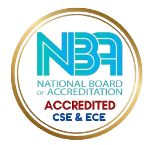Inclusive Development and Empowerment Center for Differently-Abled, (IDEA)
Committee Coordinator: Prof. Sreedhara B D, Department of Physical Education
Click Here for Recent Activity
The Inclusive Development and Empowerment Centre for Differently-Abled (IDEA) Cell is dedicated to the application of engineering principles, technologies, and solutions to advance equity, inclusivity, and empowerment within various communities and social contexts. This concept harnesses engineering knowledge and innovation to address societal challenges, bridge gaps, and create opportunities for underrepresented or marginalized groups.
Engineering's potential to contribute to equity, empowerment, and development encompasses various themes:
- Access to Basic Services: Providing clean water, sanitation, energy, healthcare, and education in underserved areas.
- Technology Accessibility: Designing inclusive and affordable technologies for people with disabilities or limited resources.
- Bridging the Digital Divide: Creating technology solutions that offer connectivity and digital literacy to disadvantaged communities.
- Sustainable Infrastructure: Designing projects that consider social, environmental, and economic impacts while addressing the needs of vulnerable populations.
- Education and Training: Offering engineering education, training, and mentorship programs to empower individuals from diverse backgrounds in pursuing STEM careers.
- Innovation Hubs: Establishing innovation centres or maker-spaces in underserved areas to encourage local innovation and entrepreneurship.
- Social Entrepreneurship: Supporting engineering-driven social enterprises that address societal issues while promoting economic growth.
- Community Engagement: Involving local communities in the design and implementation of engineering projects to ensure their needs are met.
- Environmental Justice: Using engineering to address environmental challenges with a focus on communities disproportionately affected by pollution or climate change.
- Humanitarian Engineering: Applying engineering expertise to provide disaster relief, improve living conditions, and enhance resilience in disaster-prone regions.
By integrating equity empowerment principles into engineering practices, professionals can contribute to more inclusive and sustainable development, creating a world where everyone has equal opportunities to thrive and participate in technological advancements. This motivation encourages faculties, students, scientists, technologists from engineering colleges, R & D labs, non-governmental organizations (NGOs), and field-level workers to undertake action-based projects aimed at socio-economic development for disadvantaged sections of society. This includes appropriate interventions of Science, Technology, and Innovation (STI) to improve the quality of life and livelihood. The intervention of STI (Engineering) into equity empowerment can provide empowerment in emerging areas like inclusive design, affordable solutions, renewable energy access, healthcare technologies, education tools, agricultural innovation, and smart cities for all. Thus, by focusing on engineering solutions that prioritize equity, social impact, and community involvement, engineers can contribute to a more just and inclusive society, empowering individuals and communities to overcome challenges and thrive.
VISION
"Empowering through engineering, we envision a future where equity is at the forefront of innovation, fostering inclusivity and providing opportunities for all. Through collaborative and sustainable solutions, we strive to bridge gaps, uplift communities, and create a world where technology is a tool for empowerment and positive change."
MISSION
- Harness the Power of Engineering: Utilize engineering to drive equity and empowerment in underserved communities by developing accessible, sustainable, and impactful solutions.
- Break Down Barriers: Work towards a future where every individual has the opportunity to thrive and contribute to a more equitable society through partnerships, innovation, and a commitment to social responsibility.
GOALS
- Develop and Implement Accessible Technologies: Create engineering solutions that are affordable, easy to use, and accessible to marginalized communities, bridging the digital divide and providing equal opportunities for technological advancement.
- Collaborative Education Initiatives: Establish partnerships with educational institutions and community organizations to offer training, workshops, and mentorship programs, empowering individuals with the skills needed to participate in the engineering field.
- Addressing Local Challenges: Identify specific challenges faced by underserved communities and develop targeted engineering projects that directly address those challenges, contributing to improved quality of life and sustainable development.
- Diverse Representation: Promote diversity and inclusion within the engineering field by actively seeking and supporting underrepresented individuals, ensuring that a wide range of perspectives are contributing to solutions.
- Socio-economic Empowerment: Create initiatives that not only provide engineering solutions but also contribute to economic empowerment, job creation, and entrepreneurship within marginalized communities.
- Long-term Sustainability: Design engineering projects with a focus on sustainability, both environmentally and socially, to ensure that the solutions implemented have a lasting positive impact.
- Advocacy and Awareness: Raise awareness about the importance of equity in engineering and its potential to drive social change, advocating for policy changes and support at local and global levels.
- Measurement and Evaluation: Establish metrics and evaluation mechanisms to track the effectiveness of projects, ensuring that they are meeting their intended goals and making necessary adjustments as needed.
- Global Collaboration: Engage in cross-border collaborations and knowledge-sharing to leverage expertise and resources, accelerating the impact of engineering solutions for equity and empowerment on a global scale.
- Continuous Learning and Adaptation: Stay open to feedback, learn from successes and failures, and continuously adapt strategies to remain responsive to the evolving needs of the communities being served.
The Inclusive Development and Empowerment Centre for Differently-Abled (IDEA) Cell brings about numerous benefits, including:
- Inclusive Innovation: By involving diverse perspectives and addressing the needs of marginalized communities, engineering solutions become more relevant, effective, and inclusive, driving innovation that benefits everyone.
- Closing the Opportunity Gap: Providing access to education, resources, and technology creates opportunities for individuals who might otherwise be excluded, closing the gap between privileged and underrepresented groups.
- Economic Growth: Empowered communities contribute to local economies through job creation, entrepreneurship, and the development of sustainable technologies, fostering economic growth and resilience.
- Social Cohesion: Engineering efforts that promote equity empower communities to work together, fostering social cohesion, collaboration, and a sense of collective purpose.
- Skill Development: Training and educational initiatives associated with engineering for equity empowerment equip individuals with valuable skills, enhancing their employability and self-reliance.
- Sustainable Development: Solutions designed with equity in mind prioritize long-term sustainability, ensuring that communities can thrive while also protecting the environment.
- Diverse Workforce: Encouraging diversity in engineering fields enriches the talent pool and brings a wider range of perspectives to problem-solving, leading to more creative and robust solutions.
- Empowerment and Agency: Engineering projects that empower communities foster a sense of agency, allowing individuals to actively participate in shaping their future and influencing positive change.
- Tech Literacy: Bridging the digital divide through engineering initiatives enhances digital literacy and access to information, enabling individuals to participate fully in the digital age.
- Positive Role Models: Success stories of individuals from underrepresented groups who have excelled in engineering serve as role models, inspiring others to pursue careers in STEM fields.
- Reduced Disparities: Engineering efforts that target equity can contribute to reducing disparities in areas such as education, healthcare, and access to basic services.
- Global Impact: Engineering for equity empowerment can have ripple effects beyond local communities, inspiring similar efforts and contributing to a more just and inclusive world.
Summary / Outlook
The establishment of the Inclusive Development and Empowerment Centre for Differently-Abled (IDEA) Cell marks a significant stride toward a more equitable and inclusive future. This initiative is fuelled by the belief that when engineering is wielded with a focus on equity, it has the power to spark positive change and uplift marginalized communities.
By investing resources, expertise, and unwavering dedication into this venture, the cell is committed to bridging gaps, dismantling barriers, and paving the way to empowerment. Through accessible technologies, inclusive design, and collaborative education, it strives to equip underrepresented individuals with the tools, knowledge, and opportunities essential for flourishing in the fields of engineering and technology.
The cell's dedication to addressing local challenges, advocating for policy reforms, and nurturing sustainable solutions embodies a comprehensive approach to development, taking into consideration social, economic, and environmental dimensions. By embracing diversityand championing representation, it enriches the engineering landscape with diverse perspectives, fostering innovative solutions that benefit society at large.
As the Inclusive Development and Empowerment Centre for Differently-Abled Cell embarks on this transformative journey, it measures its success not solely by technological advancements but by the lives transformed, communities uplifted, and the equitable future it contributes to shaping. Through collaboration, advocacy, and an unwavering commitment to equity, the cell aspires to make a significant contribution to a more inclusive world, where engineering serves as a catalyst for positive change and empowerment.




